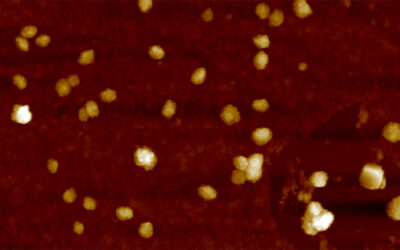Individual things get lost in space or in the crowd, like the needle in the haystack. If rare things are to be scrutinized closely, they are best isolated and confined. In experimental science this often means looking at smaller volumes and, ideally, in real time. The most accessible small volume used in this respect is quite common in daily life–it’s the water droplet. However, two inherent properties of water droplets need to be controlled to yield successful experiments: Droplet movement-like water running down the spectator’s glasses–and droplet coalescence–the forming of puddles, so to speak.
An important biochemical technique relying on individual droplets is the droplet digital polymerase chain reaction (ddPCR) which allows for high-throughput quantification of DNA. – A typical application is the analysis of gene expression over various cell types or organisms.
For reliable results, droplet fusion must be prevented in ddPCR. Current microfluidic systems achieve this by either separating the droplets with immiscible oil or by anchoring them onto patterned surfaces. Both approaches either hamper reaction throughput or real-time detection.
Prof. Ying Mu and co-workers from Zhejiang University, P.R. China, address these problems by using a thermosetting oil that forms an elastic solid after droplet generation, which freezes the droplets inside a continuous phase.
The researchers combine silicon oil, nonionic surfactant, vinyl silicone oil, hydrosilicone oil, and a Pt catalyst. The mixture can be polymerized either in 72 min at biologically friendly 37°C or in just 37 seconds at 95°C – which is a standard temperature regime in a PCR cycle. Being based on the hydrosilation of vinyl silicone oil and hydrosilicone oil, the reaction does not require any inducers.
Droplet motion and coalescence could be eliminated by the crosslinking material without influencing a real-time polymerase chain reaction (PCR). Further analysis of the PCR products is facilitated by their total recovery from microcapsules, a feat not readily achievable with existing surfactant-based methods.
Exceptionally low cytotoxicity of the material allowed its use in single-cell culture, indicating its potential for cell-based assays that target heterogeneity between individual cells.

















